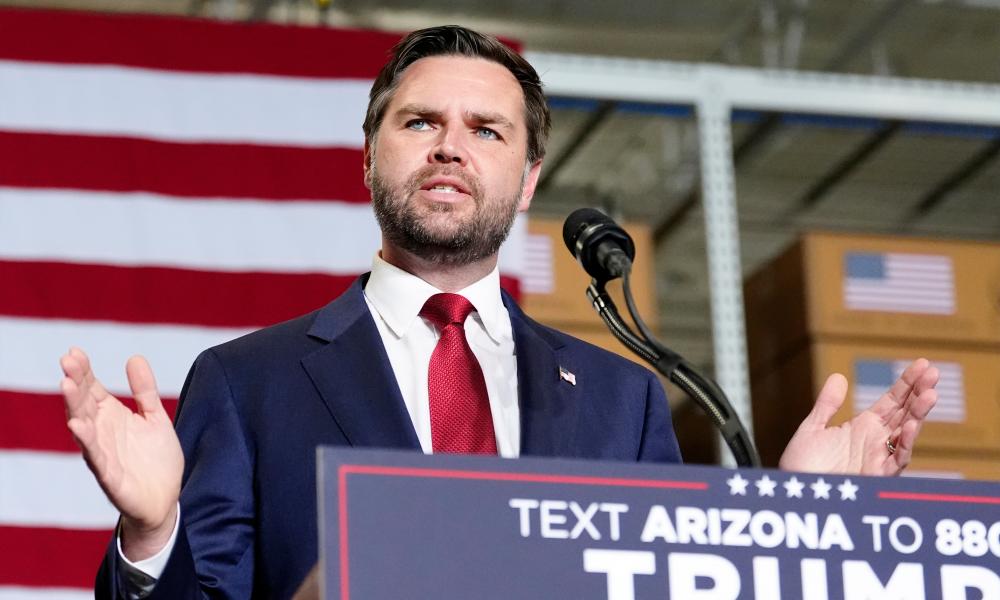In the days leading up to the election, JD Vance, the Republican vice-presidential candidate, urged his supporters in Arizona to rally for voter turnout, emphasizing the precariousness of the election outcome. During a rally in Peoria, Vance painted a vivid picture of a narrow victory for Kamala Harris, stressing the importance of mobilizing friends and family to secure a win for their party. He articulated a sense of urgency by suggesting that the outcome could hinge on the efforts of local supporters, imploring them to “work our rear ends off” to regain Republican dominance in a state that flipped blue in the 2020 election. Vance employed humor to motivate the audience, joking that each person should aim to bring nine friends to the polls, despite acknowledging the sensitivity surrounding voter fraud allegations.
As he addressed the crowd, Vance acknowledged the changing dynamics of the electorate, particularly in Arizona, where many voters had already cast their ballots. However, he remained optimistic, asserting that enough undecided voters still existed to tip the scales in favor of the Republican ticket. His pitch centered around the tangible issues affecting Arizonans, such as inflation and housing costs, contrasting them with the perceived stability and prosperity of the Trump administration. Throughout the rally, he reinforced that voters need not fully agree with him or Trump, but he urged them to consider the adverse effects of Democratic policies now being felt in their communities.
In Tucson, Vance escalated his criticisms of Kamala Harris and the Democratic platform, particularly targeting Harris’s media engagements and questioning her capability to lead effectively. His quips regarding Harris’s interview skills served to undermine her credibility and bolster support for Trump by presenting her as inadequate in addressing pressing national concerns. Vance’s approach included invoking recent tragedies, like the murder of a US Marine in Mexico, which he used to accentuate the failures of the Biden administration in border policy and to solidify his commitment to tougher stances against cartels and illegal immigration.
During interactions with the media, Vance faced questions regarding contentious immigration policies, particularly Trump’s campaign promise of mass deportations. While he emphasized the need for deporting violent criminals, he maintained a broader stance that included deporting individuals who entered the country illegally. Vance’s remarks suggested that maintaining a balance between strict immigration enforcement and humane treatment was essential, framing the deportation conversation as a moral and legal imperative. He sought to resonate with the crowd’s emotions while addressing the complexities of the immigration debate, thereby reinforcing a central narrative of his campaign.
Despite vocalizing concerns over the integrity of past elections, Vance encouraged his supporters to utilize all available voting methods, including early and mail-in voting, to ensure their voices were heard. This approach marked a departure from the more aggressive stances some Republicans had taken against mail-in ballots. By promoting a “strategic” engagement with the electoral process, he aimed to galvanize his supporters into action regardless of past grievances associated with voting methods, emphasizing effectiveness and participation rather than resistance to current systems.
In conclusion, Vance’s rally underscores the critical importance of Arizona as a battleground state in the upcoming election as candidates aim to sway public opinion and mobilize voters. His rhetoric exemplifies the heightened stakes surrounding the election, where every vote is perceived as crucial to determining the ultimate outcome. By focusing on local issues and invoking emotional narratives, Vance and his campaign are not only attempting to reclaim a state lost in 2020 but also to redefine the discourse around key political issues leading into the election. The mixed sentiments towards voting practices and the future of immigration policy underline the evolving landscape of American politics as voters prepare to make significant decisions at the polls.

